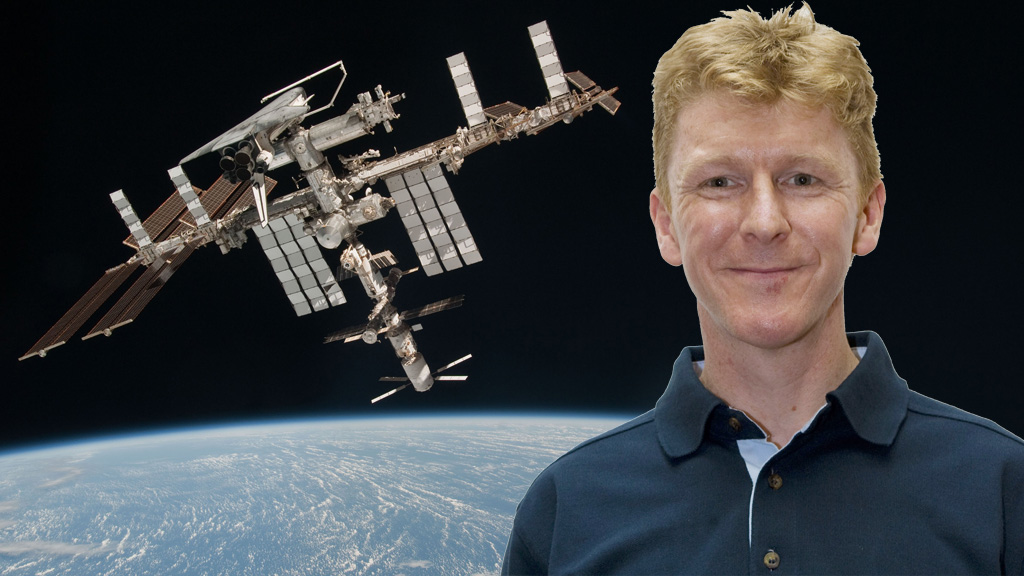Ground control to Major Tim – Briton to join space station
Former British helicopter pilot Major Timothy Peake becomes the UK’s first home-grown astronaut after being selected as one of six candidates to join the International Space Station.
Major Peake, a test pilot in the army air corps, is due to be announced by the European Space Agency as one of those heading to the ISS in two years’ time.
The 41-year-old is one of six successful candidates out of 8,000 would-be astronauts. He is expected to head to the space station in November 2015 for a six-month period.
Major Peake will carry out a science programme and take part in a European education initiative before and during his mission.
He said: “I am delighted to be proposed for a long-duration mission to the International Space Station. This is another important mission for Europe and in particular a wonderful opportunity for European science, industry and education to benefit from microgravity research.

“Since joining the European Astronaut Corps in 2009, I have been training to work on the station and I am extremely grateful to the ground support teams who make it possible for us to push the boundaries of knowledge through human spaceflight and exploration.”
Prime Minister David Cameron said: “This is a momentous day, not just for Tim Peake but for Great Britain. It is a great sign of our thriving British space sector, which has seen real growth thanks to our world-class research, and now supports nearly 30,000 jobs.
“What an achievement that Tim was picked for this historic role from over 8,000 applicants from around the world. I am sure he will do us proud and I hope that he will inspire the next generation to pursue exciting careers in science and engineering.”
Social spaceman?
The announcement follows the internet success of Canadian astronaut Commander Chris Hadfield, who gained thousands of Twitter followers with his pictures posted from the space station and his video rendition of David Bowie’s Space Oddity, which went viral.
Whether or not Major Peake will take to the role of social spaceman with the same zeal is unclear, though he does currently tweet from the account @astro_timpeake.
He has used his account to tweet pictures of his training, including parabolic flight training (when there is reduced gravity) and scuba diving (see tweets, below).
Many thanks to NASA’s EVA training team…passed eval today & now head back for a weekend in London…happy days :) twitter.com/astro_timpeakeâ?¦
— Tim Peake (@astro_timpeake) December 13, 2012
Scuba diving today in NASAs enormous 12m deep pool…space station mock-up is used for spacewalk training-great fun! twitter.com/astro_timpeakeâ?¦
— Tim Peake (@astro_timpeake) November 30, 2012
Busy morning as EUROCOM working with #ISS Exp35 crew-with some help from @spacemascotuk twitter.com/astro_timpeakeâ?¦
— Tim Peake (@astro_timpeake) April 19, 2013
The 41-year-old was selected by the ESA as one of the six astronaut corps recruits in May 2009.
The first Briton in space was Sheffield-born chemistry graduate Helen Sharman in May 1991. She took part in the Soviet mission Project Juno, spending eight days conducting scientific experiments at the Mir space station.

Huge financial costs meant that Britain has in the past rejected the notion of manned space flights. A handful of Britons have flown on the US space shuttle, but there have been no “home-grown” UK manned space missions.
However, the amount the UK contributes to the European Space Agency budget, which makes up by far the largest proportion of the UK’s investment in space exploration, has been growing in recent years (see graphic, above). Since 2010 the UK’s contribution has grown by 17.8 per cent to €300m.
The largest contributor is Germany at €772.7m, and France contributes €747.5m. Spain is the only contributor in the top five largest investors to have reduced the amount it contributes since 2010 – down 23.4 per cent to €149.6m.